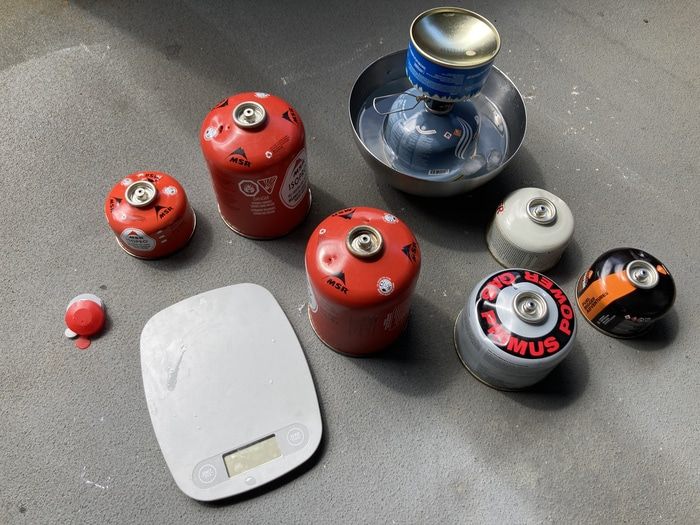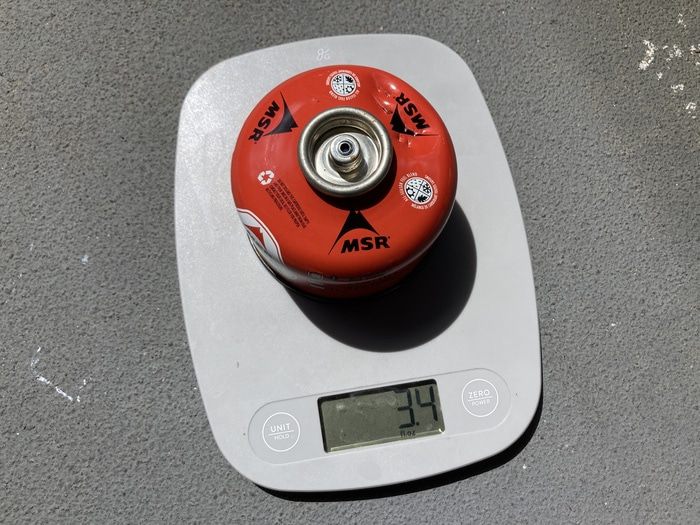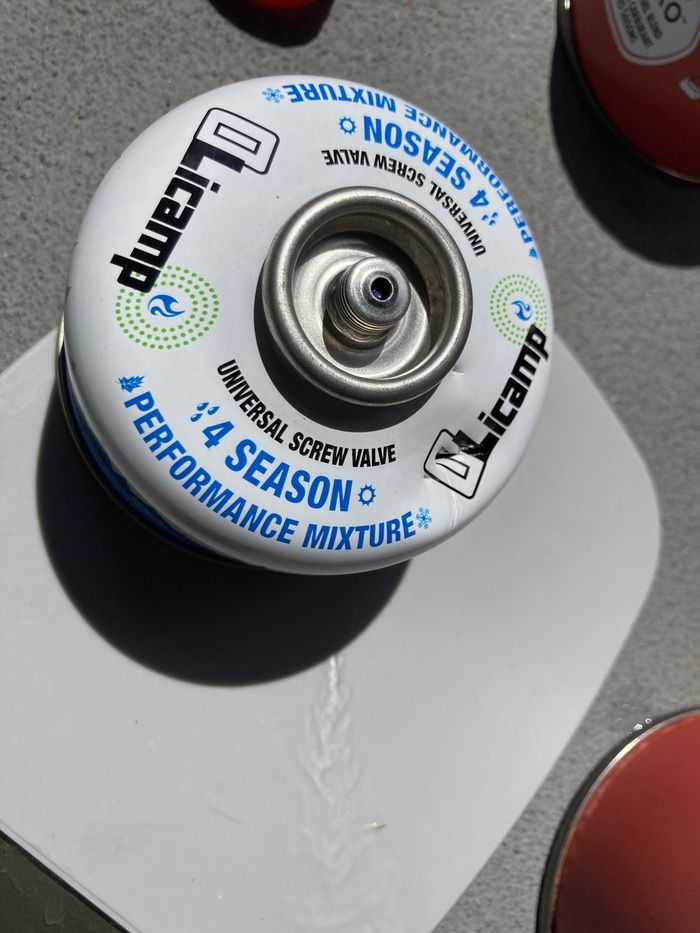Thoughts on refilling isobutane canisters
I have a hard time throwing things away and that can turn into a hoarding habit at times. For over 10 years I’ve been holding on to various isobutane fuel canisters in the hopes of burning that last bit of gas. So finally I purchased a refill valve on Amazon and decided to consolidate the gas into a single canister.
I punctured (swift blow with the pick of an ice axe) empty canisters to make sure all the gas was gone and weighed them:
- 3.4oz (small)
- 4.5oz (medium)
- 7.3oz (large)
Then I weighed full canisters:
- 7.4oz (small)
- 13.1oz (medium)
- 23oz (large)
Now I knew when to stop transferring gas either because a canister was empty or a canister was full. (I should also say MSR does an excellent job putting gross/net weight on their canisters which aligns with these numbers)
Next I took an bowl, filled it with an ice cube tray’s worth of ice, placed the destination canister inside and filled it with water. There’s a natural area for air to get trapped under the canister causing it to float so make sure to let this air escape. I took the source canisters and put them all in the sun to heat them up so the gas would flow out of them better.
The valve I bought has good markings for in/out so I screwed it on as directed and then took turns emptying a canister until it got too cold. As a gas canister empties the canister cools down causing it to lose pressure. If a canister got too cold, I simply disconnected it and let it warm in the sun for a while. When canisters felt close to empty I would weigh them to see if there was any gas left.
I could usually get to within 1oz of empty. Then I would puncture to can with an ice axe in order to recycle it. Even after the initial hiss, iso-butane will silently continue to leak out for a while (see photo). It’s important to be outside when puncturing canisters to avoid gas buildup.
Final numbers:
- 7 canisters (various sizes) recycled
- 4 oz of fuel reclaimed


